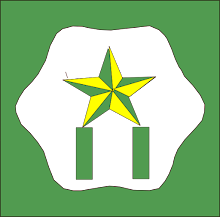When a Linux command appears to be stuck or unresponsive, there are several ways to identify the problematic command. Here are a few methods you can try:
- Check the process status (ps): Run the
pscommand to display a snapshot of currently running processes. Look for any processes that seem to be consuming excessive CPU or memory resources. If you find a command that is consuming unusually high resources or has been running for a long time, it might be the culprit.
ps aux
- Monitor system activity (top): The
topcommand provides a real-time overview of system processes, resource usage, and their respective CPU and memory consumption. It can help identify commands that are utilizing excessive resources or causing high system load.
top
- Check the process tree (pstree): Use the
pstreecommand to visualize the process hierarchy on your system. This can help you identify the parent-child relationships between processes and determine if any command is stuck due to a child process issue.
pstree
- Analyze system logs: Check the system logs for any error messages or warnings related to the problematic command. The main system log file is usually located at
/var/log/syslog. Use a text editor or thetailcommand to view the contents of the log file.
tail -n 100 /var/log/syslog
- Utilize the strace command: The
stracecommand allows you to trace system calls and signals generated by a command. Running the command with strace can provide detailed information about the system calls being made, which can help identify where the command is getting stuck.
strace -p <PID>
Replace <PID> with the process ID of the stuck command.
- Check disk I/O (iotop): Use the
iotopcommand to monitor disk I/O activities. If a command is stuck due to heavy disk usage,iotopcan help you identify it.
iotop
Remember to use these commands with appropriate permissions, such as running as the root user or using the sudo command if necessary. When a Linux command appears to be stuck or unresponsive, there are several ways to identify the problematic command. Here are a few methods you can try:
- Check the process status (ps): Run the
pscommand to display a snapshot of currently running processes. Look for any processes that seem to be consuming excessive CPU or memory resources. If you find a command that is consuming unusually high resources or has been running for a long time, it might be the culprit.
ps aux
- Monitor system activity (top): The
topcommand provides a real-time overview of system processes, resource usage, and their respective CPU and memory consumption. It can help identify commands that are utilizing excessive resources or causing high system load.
top
- Check the process tree (pstree): Use the
pstreecommand to visualize the process hierarchy on your system. This can help you identify the parent-child relationships between processes and determine if any command is stuck due to a child process issue.
pstree
- Analyze system logs: Check the system logs for any error messages or warnings related to the problematic command. The main system log file is usually located at
/var/log/syslog. Use a text editor or thetailcommand to view the contents of the log file.
tail -n 100 /var/log/syslog
- Utilize the strace command: The
stracecommand allows you to trace system calls and signals generated by a command. Running the command with strace can provide detailed information about the system calls being made, which can help identify where the command is getting stuck.
strace -p <PID>
Replace <PID> with the process ID of the stuck command.
- Check disk I/O (iotop): Use the
iotopcommand to monitor disk I/O activities. If a command is stuck due to heavy disk usage,iotopcan help you identify it.
iotop
Remember to use these commands with appropriate permissions, such as running as the root user or using the sudo command if necessary.

No comments:
Post a Comment